All images and text are copyright protected.
For license to reproduce contact
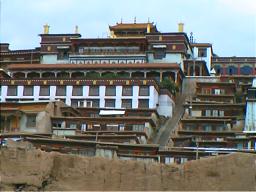 1.Firmly maintaining its stance on atheism, the Chinese Government has nevertheless rebuilt many temples and monasteries such as the Ganzi Lamasery in order to build better relationships with the minorities and as tourist attractions. |
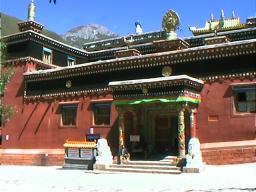 2. The 250 year old Bakong Printing Lamasery in Dege, Sichuan, is among the 3 most important lamaseries in the Tibetan Buddhist world. It houses over 215,000 woodblocks with ancient texts on astronomy, geography, music, medicine and two of the most important Tibetan sutras. |
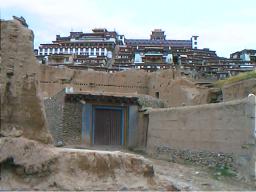 3. Firmly maintaining its stance on atheism, the Chinese Government has nevertheless rebuilt many temples and monasteries such as the Ganzi Lamasery in order to build better relationships with the minorities and as tourist attractions. |
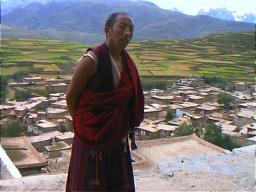 4. Tibetan monasteries are often, though not always, built on a hill overlooking the town that they serve. Tibetan buildings such as these in the background, usually have earthen roofs which are used for drying hay and crops. Ganzi Lamasery, Sichuan |
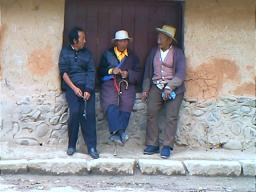 5. Older Tibetans tend to speak Mandarin as a very distant second language at the two languages are very dissimilar. Ganzi, Sichuan. |
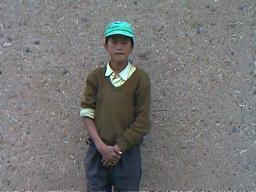 6. Younger Tibetans such as this 16 year old, speak both languages fluently. |
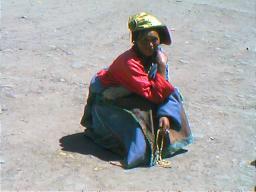 7. Most Chinese such as this Khamba woman tend to squat if waiting for any length of time. They can comfortably hold this position for over an hour. Ganzi, Sichuan. |
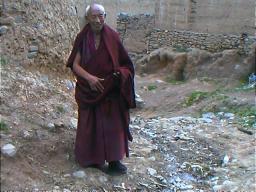 8. “The road to Sichuan is harder to travel than the road to Heaven” wrote the Tang poet, Li Bai. To this monk on the main path to Ganzi Lamasery, Sichuan, it must be all the same. |
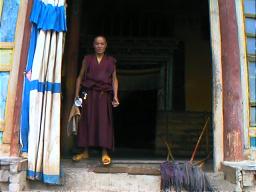 9. Tibetan Buddhist Monk |
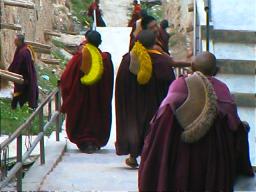 10. Because of these hats worn on special occasions, the Gelu Order came to be popularly known as The Yellow Hats which is like calling Christians ‘Cross People’. Ganzi Lamasery, Sichuan. |
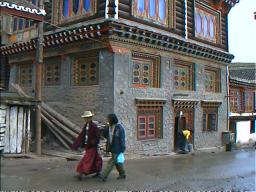 11. A Tibetan house in Ganzi, Sichuan. |
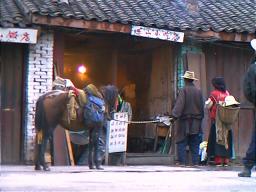 12.Breakfast on the hoof. Ganzi, Sichuan. |
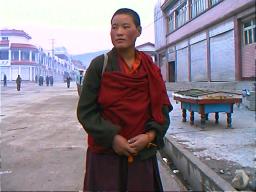 13. This Tibetan Buddhist nun also worked in the town digging roads, perhaps as community service or for pay. Ganzi, Sichuan. |
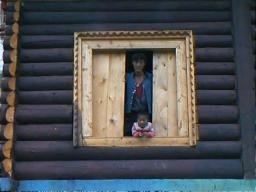 14. In just-opened-to-foreigners Peiyul Town, this lay carpenter was hard at work restoring the Lamasery. |
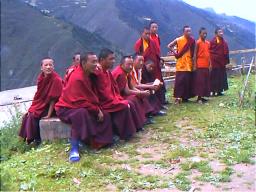 15. These Nyingma monks were curious, open and friendly to the first foreigners in Peiyul Lamasery, Sichuan. |
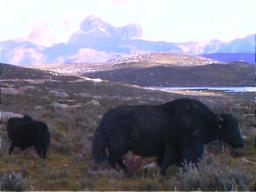 16. Hardier than cows, yaks provide milk, butter, cheese and meat and their hides are used for making yurts or tents. In the background is Mt Chola, its peak at 6168m lost in the clouds. Ganzi, Sichuan. |
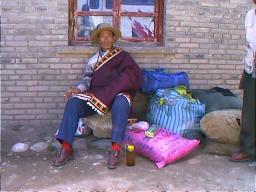 17. This Khamba had come to Ganzi on a shopping spree and had bought himself a fancy new chuba (coat). Ganzi, Sichuan. |
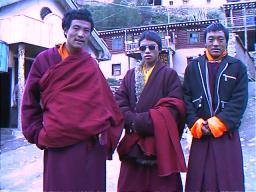 18. These monks returning to Chamdo in Tibet kindly consented to take my kathak (silk prayer scarf) to offer up in their monastery. Dege, Sichuan. |